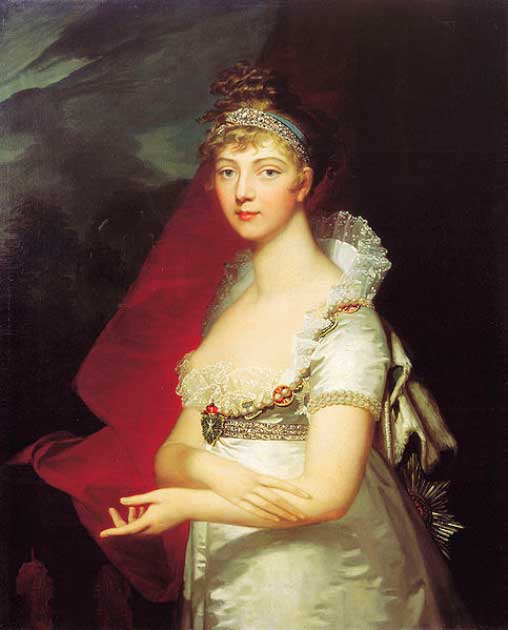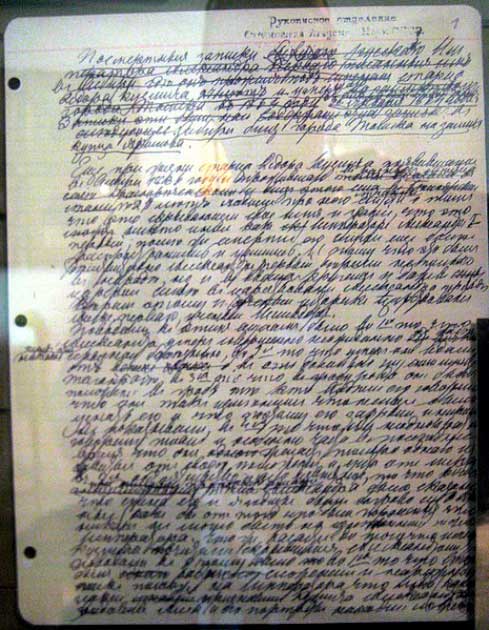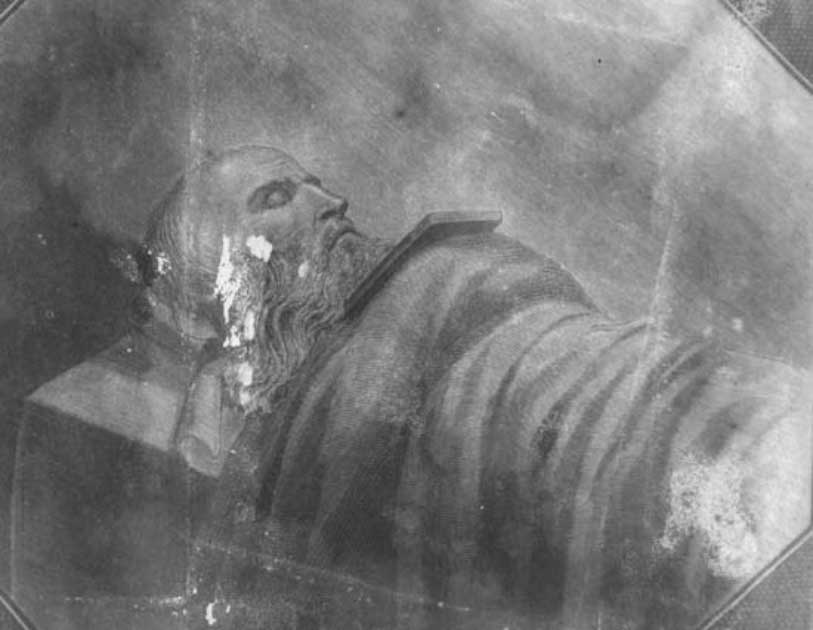Faking your death to live a different life under a new identity isn’t just for mystery films and novels. Many people in the world believe famous people survived long after they allegedly died.
There is Elvis Presley, who some people believe faked his death to hide from the Mafia, to whom he owed money, or who others believe disappeared as part of a bizarre government conspiracy. True Crime legend D.B. Cooper jumped out of an airplane with $200,000 ransom money and a parachute and was never seen again.
Many believed that 17-year-old Anastasia Nikolaevna Romanov escaped the night her family died and was living a new life. That was until her, and the rest of the Romanov family’s remains were found and positively identified in 2007.
Anastasia Nikolaevna Romanov is not the first member of the Russian nobility people believed staged their deaths; there was Emperor Alexander I of Russia. For centuries, there have been legends told, and rumors whispered that the 47-year-old ruler of Russia faked his death in a remote village in Southern Russia.
Is that true? Who was Feodor Kuzmich? What do a dead Emperor and a Siberian monk have to do with each other?
Alexander I, Emperor of Russia
Emperor Alexander I took the throne after his father, Emperor Paul I, was assassinated in 1801. Alexander I ruled Russia from March 23, 1801, until his “death” on November 19, 1825. Emperor Alexander I was Russia’s ruler during the chaotic period of the Napoleonic Wars.
This may have been the cause of his declining mental health before 1825. He became incredibly suspicious of everyone around him and super religious and passive. Some historians believe that the changes in Alexander I’s mental health were caused by schizophrenia, but this is only a theory.
In the Fall of 1825, Alexander I traveled to southern Russia because his wife, Empress Elizabeth Alexeievna, was in poor health. Doctors recommended she rest in the city of Taganrog, warmer than St. Petersburg, where the Emperor lived.

During the trip south, Alexander I caught a cold in Crimea, which developed into typhus when he returned to the Empress in Taganrog. He died in Empress Elizabeth Alexeievna’s arms on December 1, 1825. Alexander I was interred at the St. Peter and Paul Cathedral of Peter and Paul Fortress in St. Petersburg.
Seems all above board, right? But then there is the detail of Feodor Kuzmich. Feodor (also spelled Fyodor) Kuzmich or Righteous Theodore of Tomsk, Siberian, elder (Church Slavonic: Пра́ведный Фео́дор Кузьми́ч То́мский, Сиби́рский, ста́рец) was a Russian Orthodox starets.
A starets is an elder of an Eastern Orthodox monastery who serves as a venerated teacher and advisor. Starets are considered an inspiration in the minds of believers and “an example of saintly virtue, steadfast faith, and spiritual peace.” Many believe Feodor Kuzmich was Alexander I, living as a monk under a new name.
What adds to the legend is the lack of information about Feodor Kuzmich’s early life. The first time Feodor Kuzmich appeared in the public eye was in 1836 in Perm after a local blacksmith found Feodor Kuzmich’s appearance strange and alerted the authorities.
Kuzmich was described as “tall, about 60 years old with lashes on his back,” and did not have any documentation on him when he was arrested. When interrogated by authorities, Feodor Kuzmich said he was Eastern Orthodox, illiterate, and had zero memories about his infancy or much of his early life before then. Due to Feodor Kuszmich’s lack of documents, a court sent him to the Siberian city of Tomsk.
According to Kuzmich, he lived a life of labor, slept only on a bare board, and only owned and wore simple clothing. For some reason, his appearance and unique mannerisms were seen as strange in Tomsk, and people assumed he had previously lived a very different life from his life in Tomsk.
- Tsar Nicholas II: Could the Romanovs have saved Imperial Russia?
- Anna Anderson: Imposter of Duchess Anastasia
When villagers would ask Feodor Kuzmich about his life before becoming a church elder and why he would live this simplistic life free of luxuries of comfort, all he would say was, “Why do you usually think that my situation is worse now than it once was? At the present time I am free, independent, and most importantly, – easy-going. Before, my happiness depended on many conditions: it was necessary to care of my loved ones enjoying the same happiness I did, so that my friends would not deceive me. Now there is nothing of this except what will always remain with me – the words of my God.”
The vague answer was all Feodor Kuzmich would say about his past. But there are other strange events. For an unknown reason, Tsarevich Alexander II (the son of Alexander I) visited the monk in 1837. After his death, Tsar Nikolai II Alexandrovich Romanov, the final emperor of Russia, was also said to have visited Feodor Kuzmich’s grave in 1893.
Suspicious
Feodor Kuzmich’s lack of a past and visits from Russian emperors while alive and dead aren’t the only things that lead people to suspect the monk was actually Alexander I. Feodor Kuzmich was reported to know how to speak French (something royals and wealthy would have the ability to learn), often talked about life in Moscow and St. Petersburg and name-dropped several prominent people from high society.

He referred to these people by their first name only, rather than their first name and patronymic name, which is still done today. A person must tell someone they can call them by their first name only when they consider the other person a friend. Kuzmich also reportedly shared “intimate details about the War of 1812” that a monk would not know.
Alexander I’s tomb has been opened four times in the past, and the most recent opening was in 1921. Soviet authorities allegedly had the tomb opened to look for and remove any valuable metals on the body or in the tomb.
Every time the tomb was opened, it was reported to be empty or showed signs of tampering. An announcement was made in 2017 that there would be a DNA genetic analysis that would officially determine if Feodor Kuzmich was indeed Alexander I.
There is a motive for such a voluntary exile from court, as well: it is suspected Alexander I had good reason to fake his death. Alexander I’s father, Paul I, was assassinated, and Alexander I did nothing to stop the murder from occurring.
He might have chosen to fake his death because he was overcome by guilt about his father’s death. Alexander I is believed to have faked his death in order to abdicate the throne and spend the rest of his days seeking forgiveness from God because he allowed his father to be assassinated.
This theory is strange and is why only some believe that Alexander I and Feodor Kuzmich were the same person. No Russian leader had willingly stepped down from their role until Nicholas II Romanov was forced to do so by the Petrograd insurgents in 1917.
This is not to say that a Russian leader could not abdicate the throne if they wanted. It just was something that had never happened. Could Alexander I have abdicated the throne and faked his death only to live as a monk in Siberia? Yes, however, it would be an extraordinary way to retire.
Evidence
Other reasons are cited as support for the belief that Feodor Kuzmich was actually Alexander I. The president of the Russian Graphological Society of Russia, Svetlana Semyonova, analyzed the handwriting of Alexander I and Feodor Kuzmich and stated they are the same.
Leo Tolstoy, the great Russian novelist, mentioned the legend of the secret identity in a short story called Posthumous Notes of the Hermit Feodor Kuzmich. Tolstoy neatly summarized the situation.

In the story, Tolstoy wrote, “After the monk’s death these rumors only spread and became stronger. Not only common people believed them but many from the elite, including the royal family of Tsar Alexander III. The reasons for these rumors were the following: Alexander died unexpectedly, he did not suffer from any disease before, he died far away from home in a remote place of Taganrog, and when he was put in the coffin many who saw him, said that he changed a lot, this is why the coffin was quickly sealed. It was known that Alexander said and wrote he wanted so much to leave his post and to stay away from this world.”
While the idea that a well-liked emperor of Russia faked his death and ran off to live the rest of his life as a monk in Siberia is fun, there is some “support” to suggest that was the case. However, the support is mostly confirmation bias.
- Where are the Lost Fabergé Imperial Eggs?
- Cold Hearted: Why Did Empress Anna Ivanovna Build An Ice Palace?
Historians widely reject this legend, while ordinary people and popular writers often bring the tale back into the public’s minds. Alexander I was very close to his wife towards the end of his life, and it would be unlikely that he would fake his death and leave his ill and weak wife in Taganrog.
There is another rumor that Alexander’s wife, who died several months after he did, ran off and became a nun who was mute. The response Kuzmich would give when asked about his earlier life which he claimed not to remember, is weird; however it is vague enough that it neither confirms nor denies the rumors. Using it as “proof” that Feodor Kuzmich was indeed Alexander I verges on tautology.
While Feodor Kuzmich was visited by Alexander II while alive and Nikolai Romanov II visited his grave is interesting, it does not mean Feodor Kuzmich was Alexander I. Eastern Orthodox has been the primary religious denomination for most of Russia’s history, and hearing the rumors that this Siberian monk had performed miracles, the Emperor of Russia would likely have made the trip from St. Petersburg to Tomsk to meet the man.
The fact that Feodor Kuzmich spoke French can not be used as proof that the monk was the deceased emperor. In the 19th century, wealthy Russians became somewhat obsessed with the style and language of French. Russian nobility and upper class became fluent in French. If anything can be concluded from Feodor Kuzmich’s knowing how to speak French, it is that he either was from an upper-class background or was taught French by a friend or family member who knew the language.
Then there is the assertion by the Russian Graphological Society of Russia’s president that Alexander I’s handwriting is the same as Feodor Kuzmich’s when analyzed. Graphology is the analysis of handwriting to determine a person’s personality traits and is regarded as pseudoscience.

There is no scientific evidence that exists that supports the effectiveness or accuracy of graphology analysis. The president of the Russian Graphological Society said that “The only difference is the handwriting of an 82 year old man [Kuzmich] we can see that he was deep in his spiritual world, arches and circles appeared in his writing. But key features remained the same in all samples.”
The samples available for the public to compare were incredibly poor-quality photocopies. Russian script handwriting is notoriously challenging to read (look up pictures of the word “chinchilla,” and you will understand), and the photo quality makes it even harder to determine what form of Russian was used.
Either the unified alphabet that was developing while Alexander was alive or in Church Slavonic, which a monk would use if the sample is a religious work. If the examples were clear, it would be easier to determine what style the two documents are in, but the similarities are questionable as they are now.
Tolstoy mentioning the “he faked his own death and became a monk” legend is not proof of anything. The short story he wrote was written but not fully completed in 1905 when he tried to publish it. It was banned from Russia and was published in Germany in 1912, two years after he died in 1910.
While Tolstoy wrote about monks, he was a known Christian anarchist who did not “embrace the orthodox Christianity of the traditional church.” Tolstoy held strong anti-aristocracy sentiments his entire life and felt that the aristocracy was a burden on the poor. His work and the quoted statement he made about Feodor Kuzmich, again, are confirmation bias.
Then there is the genetic DNA test that was spoken of back in 2017. Nothing has been reported in any Russian scientific or forensics journal about the test, and there has been no news of the results. It’s been five years since any talk of a DNA test floated around; we have no way of knowing if the test was done at all.

Well, what about the tomb looking like it has been tampered with or reports that there was no body of Alexander I? There have been four recorded openings of the tomb, and without specialized machinery, it was likely done by hand, which would leave marks as if someone had disturbed it. The rumors that the body was missing were simply rumors.
A new government was being created, and a famine occurred in 1921. Confirming the presence of a body in a tomb that was being searched for valuable metals by authorities was likely the last thing on their mind.
Until we learn the DNA test results, if it ever happens, we can not definitively say that Emperor Alexander I of Russia faked his death and lived the rest of his remaining life as a monk in Siberia named Feodor Kuzmich. However, there is more logic to support the belief that the men were two different people, and Alexander I died suddenly of typhus all the way back in 1925.
Top Image: Feodor Kuzmich and Tsar Alexander I. Source: Unknown Author / Public Domain; George Dawe / Public Domain.